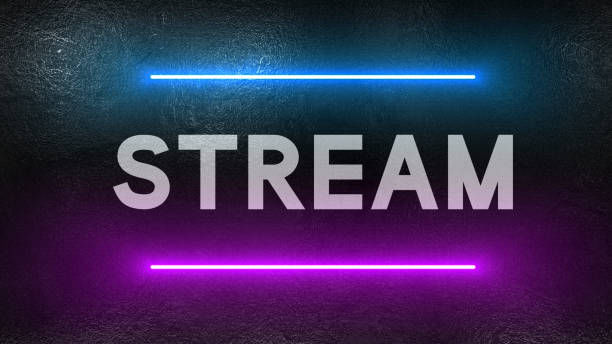CrackStreams is best understood not as a single stable company but as a recurring example of a category of websites and services that provide free access to live sports, pay-per-view events, and premium entertainment without authorization from the rights holders. These platforms often change domain names and hosting arrangements to evade shutdown, they aggregate third-party video feeds or rebroadcast commercial streams, and they present themselves as convenient and cost-free solutions for viewers who cannot or will not pay for official services. People are drawn to sites like CrackStreams for predictable reasons: the perceived savings compared with subscription or event fees, the allure of immediate access to live events that might be geographically restricted, and in some cases the frustration with fragmented legal options where different leagues, channels, and streaming platforms each have exclusive rights to particular events. However, beneath the veneer of convenience are real and varied dangers — legal exposure depending on jurisdiction and the nature of use; cybersecurity threats such as malware, phishing and intrusive adware; poor video quality and unreliable availability; and ethical concerns about the harm piracy inflicts on broadcasters, athletes, and creators. This article explores all those aspects in depth, explains how these services operate and why they persist, outlines the tangible and intangible costs to consumers and to the digital ecosystem, presents a practical comparison table of risks versus legitimate options, and finally lists lawful, safer alternatives so readers can watch the sports and events they love without exposing themselves or their devices to harm.
How unauthorized streaming services like CrackStreams operate and why they are so resilient
Sites and services that are commonly grouped under the label “CrackStreams” operate using a small set of technical and organizational tactics that make them both cheap to run and difficult to eradicate. First, they rely on aggregating feeds: that is, taking a live broadcast from a pay-TV provider, a streaming platform, or a local broadcaster and repackaging that video into multiple streams, often transcoding it to different bitrates so it can be consumed on varied connection speeds. Second, to avoid liability and law enforcement, operators commonly rotate domain names, move hosting across multiple countries, and make frequent changes to server infrastructure; decentralized content delivery via rented servers, virtual private servers, or even peer-to-peer protocols helps hide the exact source. Third, these sites monetize through intrusive advertising, pop-ups, affiliate links, and sometimes cryptocurrency mining scripts or requests to install suspicious browser plugins; in sports contexts they may also solicit donations or sell access to premium “VIP” streams. The resilience of such services stems from low operating costs, high demand for free content, and the fragmented nature of international copyright enforcement: different countries have different approaches and resources for enforcing intellectual property laws, and the internet’s architecture allows hosts and domain registrars to be switched faster than takedown processes can be completed. All of this creates a cycle where takedowns are temporary and new mirrors appear quickly, which reinforces user perception that these services are a persistent and unavoidable option.
Legal and ethical terrain: why using CrackStreams is riskier than it looks
From a legal standpoint, unauthorized streaming raises two separate but related questions: liability for those who operate and distribute the streams, and potential liability for users who access or share them. Operators who host or rebroadcast content without permission are almost always in breach of copyright law and can be subject to criminal prosecution and civil claims in many jurisdictions; evidence in numerous cases has led to domain seizures, fines, and even jail sentences for major operators. Users face a more complex picture because laws vary widely by country. In some jurisdictions merely viewing unauthorized streams may be treated as a civil infringement (exposing users to claims but usually not criminal penalties), while in others, particularly where users download or redistribute content, criminal exposure can arise. Beyond the letter of the law, there are strong ethical considerations: broadcasters pay significant sums for rights and invest in production, and athletes, leagues, and creative teams depend on licensing revenue. Piracy reduces revenue streams, which can lead to higher prices for legitimate customers, reduced investment in production quality, and fewer resources for grassroots development. The ethical argument centers on reciprocity — if you enjoy the product of someone’s labour, choosing to access it through unpaid channels undermines the sustainability of creative and sporting industries.
Cybersecurity threats and practical harms associated with unauthorized streaming
One of the biggest non-legal risks of CrackStreams-style sites is cybersecurity. Many of these platforms use aggressive third-party advertising networks that serve malicious creatives capable of delivering drive-by downloads, spyware, adware, or browser-based cryptominers that consume your CPU. Fake “play” buttons may trigger deceptive downloads or redirect users to phishing pages seeking credentials, payment information, or personal data. Some streams require users to install browser extensions, players, or “codecs” that are actually malware; even sophisticated ad blockers and up-to-date browsers cannot fully mitigate social engineered prompts or deceptive installers. In addition, lack of encryption and insecure streaming pipes can expose users on public or poorly configured Wi-Fi networks to man-in-the-middle attacks where viewers’ data can be intercepted. For people using devices that contain sensitive information — such as work laptops, smartphones linked to payment accounts, or home networks — an infection can lead to identity theft, unauthorized financial transactions, extortion (ransomware), or the compromise of other networked devices. These threats are not theoretical; security researchers routinely find malware strains and phishing domains associated with pirate streaming ecosystems. From a practical viewpoint, the hidden costs — time spent cleaning infections, potential loss of data, and privacy breaches — often exceed the nominal price of a legitimate streaming subscription.
Quality, reliability and performance: why ‘free’ often means inferior viewing experience
A commonly overlooked cost of illegal streams is the consistently degraded viewing experience. Because unauthorized streams frequently rely on unstable encodings and oversubscribed servers, users commonly encounter buffering, pixelation, dropped audio/video synchronization (lip-sync issues), and abrupt stream termination—especially during peak demand, such as the closing minutes of a major sporting event. Unlike licensed providers, pirate streams lack professional content delivery networks, redundancy, customer support, legal rights to rebroadcast multiple camera angles or overlays, and platform agreements that ensure high-definition feeds. Moreover, legal rights often include access to additional features like instant replays, multiple commentary tracks, closed captions, and official mobile apps with optimized players; these are typically unavailable on pirate feeds. Finally, because the streams are unstable, critical moments in games or events — goals, finishes, or dramatic reversals — are at real risk of being missed or delivered in poor quality, undermining the very reason many people seek live coverage.
Economic impact: how piracy affects creators, rights holders, and consumers
While users may perceive that streaming from CrackStreams saves money, the wider economic consequences are substantial. Broadcasting rights are often the primary revenue source for leagues, clubs, and rights holders; those revenues fund player salaries, venue maintenance, grassroots development, and production costs that enable high-quality broadcasts. When piracy reduces legitimate viewership or subscriber numbers, rights prices fall and broadcasters face increased pressure to cut costs or consolidate offerings, which can lead to fewer matches being televised and less investment in the sport overall. Moreover, ad revenues and broadcast sponsorships are diluted when audiences fragment across unlicensed platforms. For consumers, the long-term effect can be higher subscription prices for the legal services that remain, as rights holders attempt to recoup lost income, and fewer free or low-cost entry points for casual fans. The uncertainty also disincentivizes innovation: legitimate streaming providers experiment with user interfaces, interactive features, and accessibility improvements only when they can justify investment against a predictable revenue model.
Personal legal risk and how jurisdictions differ
It is essential to acknowledge that the degree of user exposure to legal risk varies considerably around the world. In some countries, enforcement focuses predominantly on upstream actors — the operators and distributors — and ordinary viewers are rarely targeted. In other jurisdictions, particularly where laws criminalize certain forms of online copyright infringement or where anti-piracy agencies are aggressive, individuals found to be downloading, redistributing, or facilitating access to pirated streams may face fines or even criminal charges. Legal exposure can escalate if a user actively redistributes the stream (for example, by reposting links on forums or social media), downloads copyrighted content without permission, or attempts to resell access. In addition, workplace policies frequently prohibit visiting suspicious streaming sites from corporate networks; doing so can lead to disciplinary action or termination even if criminal charges are unlikely. Because of these legal complexities, prudent viewers should favor licensed providers whose terms and conditions are transparent and avoid actions that could increase legal exposure.
Health, privacy, and the social dimension of piracy
Beyond malware and legal risks, unauthorized streaming has a privacy and health dimension. Sites that demand registration often harvest personal information and may share or sell it to third parties. Privacy breaches can expose viewers to targeted phishing, spam, and identity theft. Psychologically, the stress of worrying about legal consequences or device compromise can reduce enjoyment and turn leisure into anxiety. Socially, reliance on pirate streams can erode community support for local sports and creative scenes; when fans stop contributing to the official economy—by subscribing, buying tickets, or purchasing merchandise—the local clubs and artists that form community identity lose resources. Finally, repeated exposure to intrusive ads and scams normalizes deceptive online behaviours, particularly among younger users who may not yet appreciate the long-term consequences of sharing account credentials or installing unverified software.
Responsible alternatives: how to watch legally without overspending
Fortunately, there are many legitimate ways to reduce cost without resorting to piracy, and several strategies to access the content you want in a lawful, secure way. First, investigate tiered or a-la-carte offerings from official providers: some services sell only specific channels or event packages at reduced prices, and seasonal or short-term passes are common for major events. Second, consider shared family accounts where permitted; many platforms explicitly support multiple profiles under a single paid subscription, allowing households to split costs while remaining within terms of service. Third, make use of free, ad-supported legal streams: numerous broadcasters operate supported channels and apps that offer selected live events and highlights. Fourth, explore pay-per-view for occasional marquee events rather than maintaining an expensive ongoing subscription. Fifth, local bars or community venues sometimes hold licensed screenings for big games at a fraction of the cost per person. Finally, universities, public libraries, and certain organizations provide access to streaming platforms as part of membership; checking these institutional options can yield legal access without high personal expense.
Comparison tables: risks versus legitimate options and quick reference
| Risk / Issue | Unauthorized stream (CrackStreams) | Licensed provider / Legal alternative |
|---|---|---|
| Legal exposure | Possible civil/criminal risk in some jurisdictions | Minimal if following terms of use |
| Cybersecurity | High risk: malware, deceptive installs, phishing | Low risk: official apps vetted on app stores |
| Video quality | Often poor, unstable, no HD guarantees | Reliable HD/4K, consistent delivery |
| Support & features | None: no replay, stats, or commentary options | Full features: replays, multiple feeds, closed captions |
| Ethical impact | Harms creators and rights holders | Supports sports, creators, and industry sustainability |
| Reliability during peak | Unreliable; streams can drop | Designed for peak loads; redundancy in CDN |
| Privacy | High risk of data harvesting and resale | Privacy governed by provider policies and regulations |
| Legitimate Alternatives | Pros | Cons / Notes |
|---|---|---|
| Official league broadcasters | Best quality, full features | May be costly; rights fragmented across regions |
| Global streaming platforms (licensed)** | Accessible on many devices | Subscription overlap possible |
| Ad-supported legal services | Free or low cost | Ads; limited selection |
| Short-term or event passes | Cheap for one-off events | Not ideal for regular watching |
| Public screenings / venues | Social viewing, licensed | Need to travel; limited seating |
| Library / institutional access | Free or subsidized | Availability varies by institution |
How creators and industry are fighting back, and what that means for consumers
Rights holders and technology companies use a multi-pronged strategy to confront piracy. Legal action against major operators remains a central tactic: coordinated takedowns, domain seizures, and cross-border litigation have removed significant pirate infrastructure at times. Technically, rights holders invest in watermarking, fingerprinting, and content recognition systems that can track unauthorized rebroadcasts and identify sources. Payment processors, advertising networks, and hosting providers are increasingly pressured to cut services to piracy sites, which raises operational costs for such platforms. For consumers, these enforcement efforts mean that the easiest pirate links may disappear rapidly and that access becomes less reliable; on the positive side, enforcement drives innovation in legal services as providers seek to remove friction and make their own offerings more attractive. The long-term solution favored by industry is to provide affordable, flexible access that competes with the convenience of piracy rather than rely solely on punitive measures.
Practical safety measures for curious or accidental visitors
If someone accidentally encounters an unauthorized streaming site, there are simple precautions to minimize harm without engaging in illegal behaviour. Do not click any “install” prompts or download unknown players. Avoid entering personal information, and never provide payment details to a site that is not clearly legitimate. Use modern browsers that isolate downloads, enable pop-up blockers, and deploy reputable ad blockers and anti-malware extensions. Ensure the device’s operating system and antivirus software are up to date; if you suspect malware after visiting such a site, disconnect from the network and run a full scan. For workplaces and parents, consider network-level protections such as DNS filters or endpoint protection that block known piracy and malware domains. None of these steps legitimizes illegal access, but they reduce the collateral damage caused by opportunistic cybercriminals who exploit pirate streaming audiences.
Broader societal perspective: education, accessibility, and the future of live media
The persistence of CrackStreams and similar platforms is a signal that legitimate providers and rights holders have work to do in making content accessible and affordable. Policies that promote fair access — such as more transparent regional pricing, micro-subscriptions, or aggregated licensing that reduces fragmentation — would eliminate a major pull factor for piracy. Education also matters: younger audiences often grow up treating piracy as normal because they lack awareness of the legal and ethical landscape; media literacy initiatives in schools and communities can shift attitudes and reduce demand for illicit services. Finally, technology will keep shaping the market: more efficient codecs, peer-to-peer licensed distribution, and tiered rights strategies can create models where consumers enjoy great experiences at fair prices while rights holders get compensated. The future that balances accessibility and protection is possible, but it will require cooperation among platforms, rights holders, regulators, and consumers.
Conclusion: informed choices and the cost of convenience
CrackStreams exemplifies a larger ecosystem of unauthorized streaming that trades convenience and zero cost for legal uncertainty, security risk, ethical compromise, and often a notably inferior viewing experience. While the temptation of free access is understandable, the cumulative financial and non-financial costs to individuals and society are significant. Viewers who care about quality, reliability, and the long-term health of sports and creative industries will find that responsible alternatives — chosen thoughtfully — are usually the best path forward. Where cost is the barrier, there are many legitimate strategies to manage expenses without turning to piracy, from short-term passes to shared subscriptions and ad-supported options. Ultimately, protecting your devices, personal data, and legal standing should outweigh the short-lived appeal of an illicit stream; choosing legal options supports the people and infrastructure that make live events possible in the first place.
Frequently Asked Questions (FAQs)
1. Is it illegal to watch streams on sites like CrackStreams?
Laws differ by country: in many places, watching an unauthorized stream may expose you to civil liability and could be illegal in some cases, especially if you download or redistribute content; operators are more clearly liable, and users should avoid such sites to reduce legal risk.
2. Are sites like CrackStreams safe from malware?
No; these sites frequently host or serve malicious ads, deceptive installers, and scripts that can download malware or cryptominers, so accidental visits can lead to security compromises.
3. What legal alternatives are there for watching live sports affordably?
Look for official league broadcasters, global streaming services with sports packages, ad-supported free streams from legitimate broadcasters, short-term event passes, and licensed public screenings—each can be more affordable than full subscriptions.
4. What should I do if I accidentally visited an illegal streaming site?
Do not download anything or enter personal data; close the tab, run an antivirus/anti-malware scan, clear browser cache, and change passwords if you suspect credential exposure; consider network-level protections for the future.
5. How does piracy hurt athletes and creators?
Piracy reduces revenue for broadcasters and rights holders, which in turn can lower funding for leagues, clubs, player development, and production quality, ultimately undermining the ecosystem that makes live events possible.






